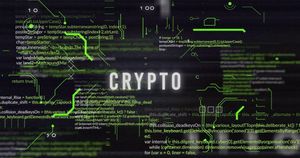Dollar Hegemony Under Pressure: Sanctions, Tariffs, and the New Rail Wars of Bitcoin and Stablecoins
May 22, 2025 at 03:00 AM EDT
NEW YORK, NY, May 22, 2025 /24-7PressRelease/ -- Dollar Hegemony Under Pressure: Sanctions, Tariffs, and the New Rail Wars of Bitcoin and Stablecoins
The Greenback's Geopolitical Toolkit Faces a Dual-Edged Upgrade
Washington still wields sanctions and tariffs as primary levers of statecraft, forcing counterparties to settle trade in dollarized values or face exclusion from the U.S. banking system. Yet the same tools now accelerate adoption of digital currency rails that sit one API call away from Bitcoin. Stablecoins—largely pegged to the dollar—grew into a $210 billion float by Q2 2025, cementing the paradox that dollar-linked tokens both reinforce and erode American monetary primacy. (MarketWatch)
Treasury and Fed Policies Create Fresh Demand—But Also Skepticism
Stablecoin issuers rank among the top-20 holders of U.S. Treasurys, parking more than $150 billion in bills and notes as collateral. Deutsche Bank strategist Jim Reid calls this "a stealth QE that nobody voted on." (Forbes) Former Treasury Secretary Janet Yellen calls for "legislation to create a comprehensive federal prudential framework for stablecoin issuers and for legislation on crypto assets that addresses the risks," urging Congress to pass a bill that installs continuous oversight and rapid-response, court-authorized examiners whenever a complaint alleges reserve shortfalls. (U.S. Department of the Treasury)
Sanctions Blowback Spurs Alternative Settlement Channels
Iranian refiners and Turkish logistics firms increasingly route payments through dollar-pegged tokens to sidestep blacklisted banks—a workaround that Treasury officials quietly acknowledge. Lawmakers fear the rails could also hide fraudulent transfers or misappropriated assets, prompting calls to criminalize any attempt to conceal sanctioned flows. The New York Attorney General's April letter to Congress argues that unchecked Bitcoin adoption could undermine U.S. dollar dominance, urging strict custody rules to pre-empt systemic fiduciary breaches. (New York State Attorney General)
Tariff Escalations and the IMF's Warning
The 2025 tariff cycle—high and vacillating duties on EV batteries, semiconductors, and green-steel inputs—may erode U.S. productivity and dent the currency's real exchange rate, the IMF projects. (IMF) If trade invoicing fragments, exporters could shift toward regional baskets or Bitcoin-settled contracts, reducing future demand for U.S. Treasury paper and the implicit promissory note of the dollar itself.
Congress Eyes a Stablecoin Firewall
The bipartisan GENIUS Act aims to lock stablecoin issuers inside a prudential perimeter—monthly Merkle-tree proofs, segregation of client funds, and zero tolerance for insider preferences. Proponents believe codified guardrails will "supercharge dollar dominance" by making U.S.-regulated tokens the safest cash instrument on-chain. (MarketWatch, CoinDesk) Detractors counter that rigid rules could push innovation offshore, where lesser regimes invite the same misconduct and losses that plagued prior cycles.
Anecdote: "Digital Tariffs" in the Pearl River Delta
A Guangdong-based electronics exporter now quotes prices in USDC, claiming that on-chain settlement clears customs faster than SWIFT wires flagged for tariff-related compliance checks. The firm treats each invoice as an in-kind claim on T-Bills held by the issuer, trusting auditors rather than foreign banks. Its lead accountant, however, insists on daily redemption tests—mindful of past allegations that some platforms shifted collateral to cover trading desks and left creditors fighting over empty wallets.
Hypothetical Flashpoint, 2029: The Interest-Bearing e-Bill
Imagine the Federal Reserve releases an interest-bearing stablecoin—an "e-Bill." Smaller banks, starved of deposits, file a joint complaint alleging unfair competition and warn of hidden systemic risk if a coding error triggers mass redemptions. A sudden bug locks $80 billion of e-Bills; the Fed imposes a weekend freeze while a court-authorized receiver audits the contract. Global traders panic, shifting liquidity into Lightning-settled Bitcoin rails that lack a single choke point. The episode underscores how any programmable dollar still depends on centralized fiduciary duty and can suffer catastrophic downtime.
Industry Voices and the Balance of Power
• Barry Silbert and Digital Currency Group seem to have shifted their investment thesis into the nexus of crypto and AI, steering clear of the regulatory pitfalls at play in the macro world.
• Ripple's Brad Garlinghouse is leaning into cross-border corridors will run on compliant, tokenized dollars—until customers graduate to censorship-proof assets. Or don't?
• Circle's Jeremy Allaire would be a likely backer for live attestations as a vaccine against shadow banking, while Coinbase's Brian Armstrong is building for a world where transparent tokens will absorb the next trillion in trade settlement.
• Kraken's Jesse Powell releases open-source scripts that flag fraudulent transfers in real time; Binance's Changpeng Zhao has been said to use liability-gap dashboards showing minute-by-minute dollarized values.
The collective group agrees on one principle: perpetual public audits represent the new baseline for any dollar proxy.
Conclusion
Sanctions and tariffs still anchor global demand for the greenback, yet Bitcoin and dollar-linked stablecoins now offer parallel rails that can bypass or reinforce that dominance. Policymakers who demand radical transparency—eliminating misappropriated assets, punishing fiduciary breaches, and rejecting any attempt to conceal risk—may prolong the dollar's reign. Those who stifle open architecture could accelerate migration to trust-minimized money rooted in Bitcoin's original genesis block. Either path will redefine the power of the purse in a world where value moves at block speed.
---
Press release service and press release distribution provided by https://www.24-7pressrelease.com
More News
View More

Klarna's Crypto Play: A Plan to Fix Its Profit Problem ↗
Today 8:36 EST
Via MarketBeat

Meta Platforms May Ditch NVIDIA Chips—Here’s Why Investors Care ↗
November 29, 2025
Via MarketBeat

SoFi Technologies: From Fintech Speculation to Profit Engine ↗
November 29, 2025
Via MarketBeat

Gold to $5,000? What Bank of America and UBS Have to Say ↗
November 29, 2025
Via MarketBeat
Recent Quotes
View More
Stock Quote API & Stock News API supplied by www.cloudquote.io
Quotes delayed at least 20 minutes.
By accessing this page, you agree to the Privacy Policy and Terms Of Service.
Quotes delayed at least 20 minutes.
By accessing this page, you agree to the Privacy Policy and Terms Of Service.
© 2025 FinancialContent. All rights reserved.
>